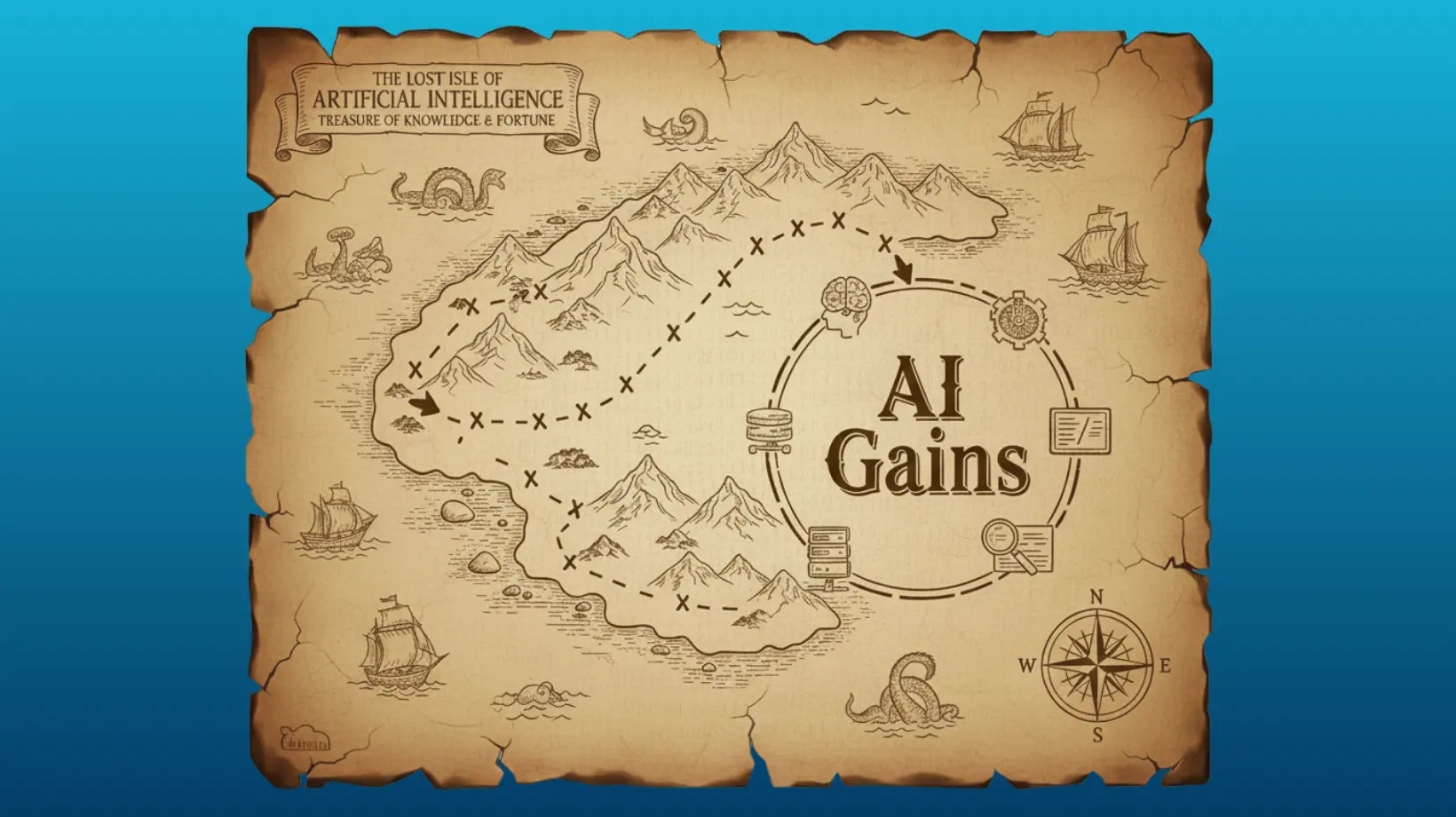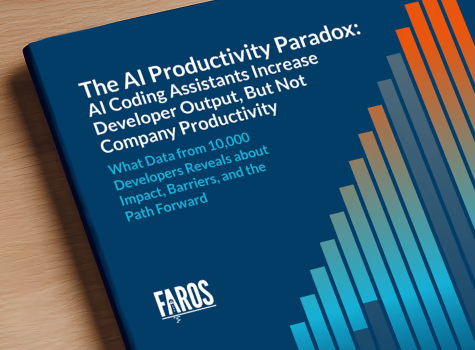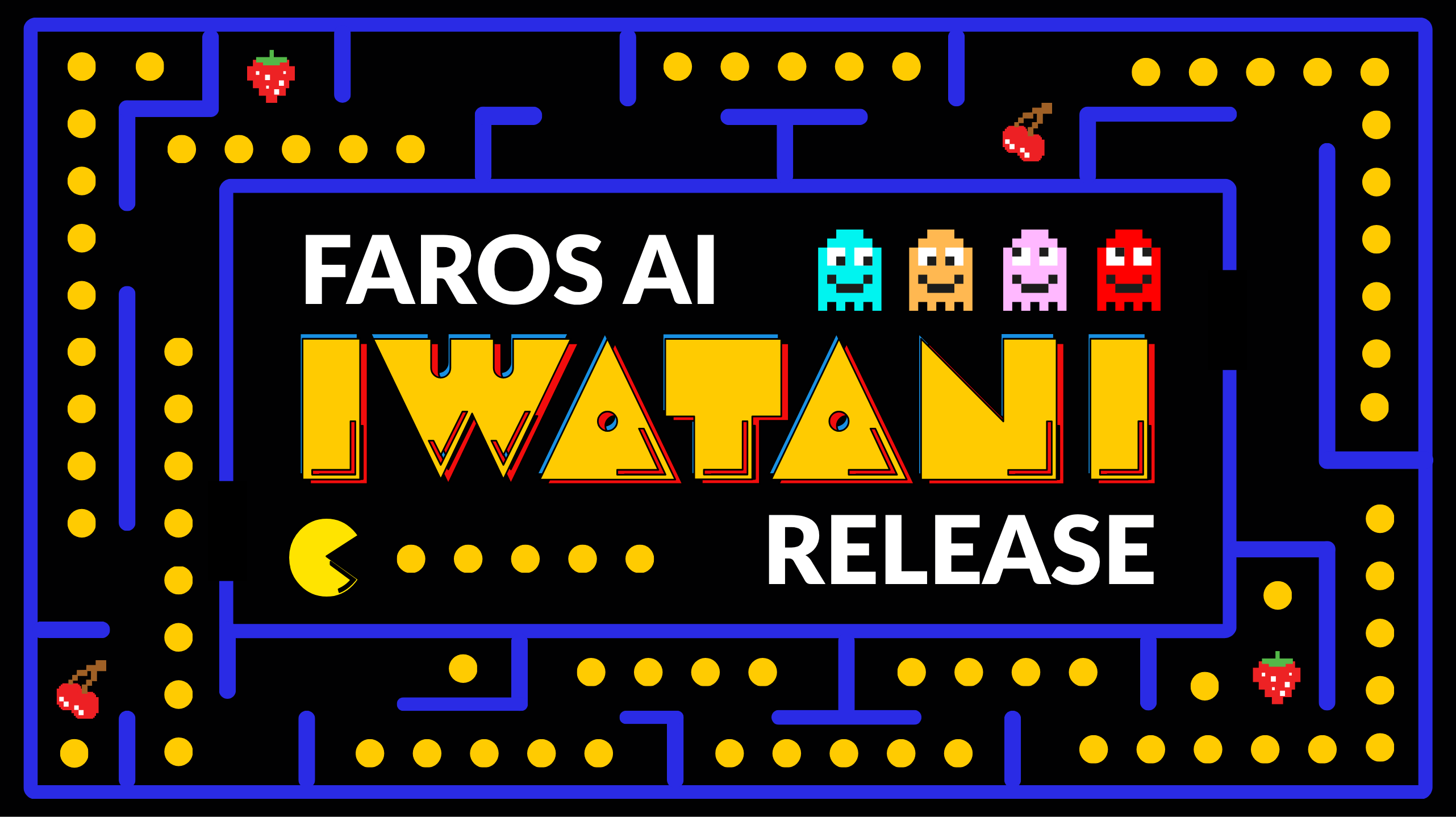Promise vs. reality: What the Bain Technology Report 2025 reveals
The promise was enticing: deploy AI coding assistants, watch productivity soar, and transform software development overnight. Yet nearly two years into the generative AI revolution, most companies are asking the same question: "Where's the payoff?"
Two important reports, Bain & Company's 2025 Technology Report and Faros AI's AI Productivity Paradox Report, reveal why AI gains have stalled and, more importantly, what separates companies capturing real value from those stuck in pilot purgatory.
The Bain Technology Report 2025 found that while two-thirds of software firms have rolled out generative AI tools, teams see only 10-15% productivity boosts. And the time saved rarely translates into business value. Most leaders are still asking, "Where's the payoff?"
Faros AI's report investigates this phenomenon with hard data. Its analysis of over 10,000 developers across 1,255 teams shows that developers using AI complete 21% more tasks and merge 98% more pull requests. Individual velocity is undeniably up. Yet paradoxically, company-wide delivery metrics for throughput and quality show no improvement. No measurable organizational impact whatsoever.
In other words, the uncomfortable truth that the Bain Technology Report 2025 identified is playing out in systems data: Individual developers are working faster, but companies aren't shipping better software any faster.
{{ai-paradox}}
Why AI gains evaporate: The bottleneck effect
The Bain Technology Report 2025 reveals that writing and testing code accounts for only 25-35% of the time from initial idea to product launch. Speeding up coding while leaving requirements gathering, planning, deployment, and maintenance unchanged creates a bigger bottleneck, not a faster pipeline.
Faros AI's telemetry makes this bottleneck visible and measurable. While PR volume surged 98% among high-AI-adoption teams, PR review time jumped 91%. The productivity didn't disappear, it simply piled up at the next constraint in the system.
Consider what we're observing in real development teams: A developer using AI blasts through three tickets before lunch. But those PRs now sit in the review queue for days because the reviewers are underwater. The testing pipeline, built for a slower cadence, starts failing. The deployment process can't keep up with daily merges.
This is Amdahl's Law in action: A system's speed is determined by its slowest component. AI just exposed where those slowest components really are.
The Bain Technology Report 2025 emphasizes that "speeding up these (coding) steps does little to reduce time to market if others remain bottlenecked." Faros AI's data shows exactly how severe this effect is.
Companies investing millions in AI coding tools see their organizational DORA metrics stay stubbornly flat, not because AI doesn't work, but because the rest of the development lifecycle hasn't evolved to absorb the acceleration.
The hidden costs of unmanaged AI adoption
The bottleneck problem compounds when you look at code quality. Faros AI's analysis found that high AI adoption correlates with a 154% increase in average pull request size and a 9% increase in bugs per developer.
AI-generated code tends to be more verbose, less incremental, and harder to review, placing even greater burden on already-overwhelmed review processes.
Faros AI also observed fragmented adoption patterns that prevent gains from scaling:
- Uneven usage across teams: Even where overall adoption appears strong, usage remains inconsistent. Because software delivery is cross-functional, accelerating one team in isolation rarely translates to organizational gains.
- Surface-level engagement: Most developers only use autocomplete features. Advanced capabilities such as chat and agentic features remain largely untapped.
- Tool sprawl: Organizations now support multiple tools, ranging from GitHub Copilot to Cursor, Claude Code, Windsurf, Augment, and more. This creates enablement chaos and inconsistent practices.
Why three out of four AI transformations stall
When Bain asked companies what the hardest part of AI adoption was, three out of four pointed to the same challenge: Getting people to change how they work.
Our conversations with CTOs at Fortune 1000 companies reveal why:
- Strategic vacuum: Most engineering leaders assumed deploying AI tools would be enough. Without clear goals, usage guidelines, or change management strategies, AI became a disconnected experiment rather than a coordinated transformation.
- Grassroots chaos: Without centralized enablement, adoption happened bottom-up through individual enthusiasm. This created critical gaps: Developers learning tools without guidance, no formal training, no playbooks shared, and best practices staying siloed.
- No measurement framework: The Bain Technology Report 2025 notes it's "tough to prove generative AI's value without clear KPIs." Companies can't identify where gains are created versus where they stall because they lack instrumentation across the full development lifecycle, and the causal analysis to attribute performance changes directly to AI adoption.
- Infrastructure lag: Legacy toolchains, brittle test frameworks, and manual deployment processes couldn't handle the velocity AI enabled.
{{cta}}
Lifecycle-wide transformation is essential
The Bain Technology Report 2025's central argument is that "real value comes from applying generative AI across the entire software development life cycle, not just coding." The report gives two examples of how leading companies like Netflix and Goldman Sachs prove this works.
Netflix implemented "shift left" approaches to ensure rapidly generated code isn't stuck waiting on slow tests.
Goldman Sachs integrated AI into its internal development platform and fine-tuned it on the bank's codebase, extending benefits from autocomplete to automated testing and code generation.
These companies didn't just add AI to existing workflows, they rebuilt workflows around AI:
- Smaller PR batching to address size inflation
- Updated review routing to handle higher volume
- Automated quality checks shifted earlier
- Modernized CI/CD pipelines
- Strategic decisions on redirecting saved time to high-value work
The Bain Technology Report 2025 shows these organizations are achieving 25-30% productivity gains, far above the 10% from basic code assistants, because they addressed the entire lifecycle, not just coding.
What high performers do differently
Faros AI's research reveals three operational characteristics that separate winners from those stuck in pilot mode:
- Data-driven decision making: They instrument the full lifecycle to identify bottlenecks and opportunities. This lets them see issues such as the sharp review time increase, and fix it.
- Strong platform foundations: They treat AI enablement as a product, with centralized prompt libraries, managed model deployment, and telemetry integration, solving what the Bain Technology Report 2025 calls "process or tooling mismatch."
- AI-first mindset: They explicitly define where AI should be applied, set usage expectations by role, and embed AI training into workflows, operationalizing Bain's "AI-native vision."
GAINS™: Measuring AI maturity and identifying friction points
Based on this research, Faros AI has developed the GAINS™ framework (Generative AI Impact Net Score) to help organizations realize AI's potential. The Bain Technology Report 2025 refers to this as operationalizing the "AI-native reinvention of the software development life cycle."
GAINS™ leverages live telemetry across your SDLC to ten dimensions that actually move outcomes, including adoption and usage, velocity and flow efficiency, quality and safety, onboarding and platform maturity, organizational structure and strategic alignment. It locates the constraint, recommends how to treat the cause, and proves the result with numbers engineering and finance both trust.
When teams use GAINS™, the conversation changes. Instead of arguing about the value and the limitations of AI tools, you can see where adoption is strong and where it is weak, whether review wait time (not coding time) is dominating lead time, that test instability (not developer speed) is driving long development cycles.
This type of clarity makes the Bain Technology Report 2025's playbook actionable. You modernize where it matters, enable people by role and services, put guardrails around AI-authored code, and track how the time you reclaimed shows up as business value on the next quarterly scorecard.
As the Bain Technology Report 2025 notes, when organizations pair generative AI with end-to-end transformation, productivity gains don't just look bigger. They are bigger, routinely in the twenty-five to thirty percent range, and increasingly durable.
{{cta}}
The shift to agentic AI ups the stakes
The urgency just went up. The Bain Technology Report 2025 emphasizes that "an even bigger leap is on the horizon as AI evolves from assistant to autonomous agent—a shift that could redefine software development and widen the gap" between leaders and laggards.
If a 98% increase in PR volume from humans using AI created a 91% review time increase, what happens when autonomous agents submit PRs independently? Organizations that haven't addressed foundational gaps like review bottlenecks, testing constraints, deployment lag, and governance structures will be overwhelmed.
Within 12 months, agentic AI will require centralized control planes providing visibility and governance across human and agent workflows. The gap is widening now.
If you recognize your organization in that opening scene with busy engineers, crowded Jira boards, flat business metrics—you don't have an AI problem. You have a system problem.
The good news is that systems can be changed.
The Bain Technology Report 2025 offers the macro lens; Faros AI data shows you exactly where to start.
- Measure end-to-end.
- Redeploy time deliberately.
- Remove the real constraint.
And do it now, while the gap between operators and dabblers is still crossable.
The companies that move decisively today, instrumenting the lifecycle, modernizing the platform, enabling their people, and governing for speed and safety, are already seeing the difference between coding faster and delivering faster. The rest will keep adding code to queues.
{{cta}}
Answers to common questions about AI transformation
We've deployed AI coding tools and our developers love them. Why aren't we seeing business impact?
You're experiencing what both the Bain Technology Report 2025 and Faros AI's data confirm: Individual velocity increases don't automatically translate to organizational gains. Developers may be coding faster and merging more PRs, but if review time increases and your testing/deployment pipelines can't keep pace, the gains get absorbed by downstream bottlenecks. The system's speed is determined by its slowest component. AI just exposed where your constraints really are.
What's the biggest mistake companies make with AI adoption?
The biggest mistake is treating AI as a point solution rather than a lifecycle transformation. Companies deploy tools but don't redesign the workflows around them. They speed up coding while leaving review, testing, and deployment processes unchanged. As the Bain Technology Report 2025 found, writing code is only 25-35% of the development lifecycle—accelerating that one piece without addressing the other 65-75% creates bottlenecks, not breakthroughs.
Our PR review times have exploded since adopting AI. Is this normal?
Yes, our data shows review time increases by 91% on average when PR volume surges. This happens because AI-generated code tends to be more verbose (154% larger PRs on average) and contain more bugs and security vulnerabilities, making reviews more complex. You need to redesign your review process: implement smaller PR batching, update routing to handle volume, shift quality checks earlier, and potentially expand review capacity.
Why is AI adoption so uneven across our engineering teams?
Our data shows several patterns: less tenured engineers adopt more aggressively (they need AI to navigate unfamiliar codebases), while senior engineers remain skeptical (they handle complex, context-dependent work where current AI struggles). Most developers only use autocomplete while advanced features remain untapped. Without centralized enablement, role-specific training, and shared playbooks, adoption stays fragmented and surface-level.
What is the GAINS™ framework and how does it work?
GAINS™ (Generative AI Impact Net Score) is a diagnostic that evaluates ten dimensions critical to AI transformation: adoption patterns, velocity, flow efficiency, quality, safety, developer satisfaction, onboarding, platform maturity, organizational structure, and strategic alignment. It uses live telemetry across your SDLC to identify where constraints actually are - whether that's review wait time, test instability, or inadequate enablement - so you can treat root causes rather than symptoms.
What's different about agentic AI, and why does it matter now?
Current AI coding assistants are copilots, meaning they suggest code step-by-step with heavy human involvement. Agentic AI will autonomously reason, plan, and execute multi-step tasks across the SDLC with minimal human intervention. If a 98% increase in human-generated PRs created a 91% review time increase, imagine what happens when autonomous agents submit PRs independently. Organizations that haven't addressed foundational gaps in review capacity, testing infrastructure, deployment pipelines, and governance structures will be overwhelmed within 12 months.
How do we change developer behavior and overcome resistance?
The Bain Technology Report 2025 found that three out of four companies say this is the hardest part. Success requires: (1) Clear strategic direction from leadership on where and how AI should be used, (2) Role-specific training; new grads need different skills than senior architects, (3) Internal playbooks and communities of practice to share what works, (4) Visible celebration of wins to build momentum, (5) Making AI competency part of the job, not optional. Grassroots enthusiasm without structure leads to shallow adoption and low ROI.
Our DORA metrics haven't improved despite AI adoption. What's wrong?
Nothing's wrong with your tools, but your system hasn't adapted. Our data shows deployment frequency improves slightly, but lead time actually increases (driven by longer reviews), while change failure rate and MTTR stay flat. The 2025 DORA Report shows AI amplifies team dysfunction as often as capability.
DORA metrics won't improve until you address the full lifecycle: Review bottlenecks, testing constraints, deployment automation, and how you redeploy saved capacity. This is why lifecycle-wide transformation is essential.
How long does it take to see real business impact from AI?
It depends on your approach. Companies treating AI as a tool see minimal gains that plateau quickly. Companies treating it as a transformation by modernizing platforms, redesigning workflows, providing structured enablement, and measuring continuously are starting to see measurable improvements within 2-3 quarters and gains that compound over time. The key is not waiting for perfect conditions but moving forward with discipline: Test, learn, adapt.
We're overwhelmed by all this. Where do we actually start?
Start with the GAINS™ diagnostic to identify your specific constraints. Don't assume you know where the problems are. Our data shows the bottlenecks are rarely where organizations think they are. Once you know whether your constraint is review capacity, test infrastructure, inadequate enablement, or strategic misalignment, you can focus investment where it actually matters. Most organizations spread resources too thin trying to fix everything. High performers identify the constraint and treat that first.
{{cta}}







